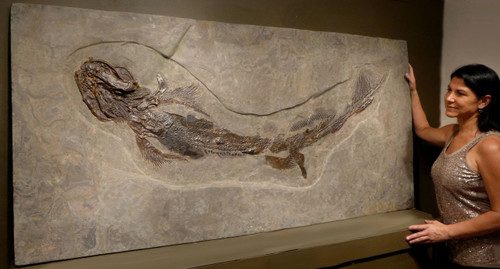This fish fossil shows that it perished after ingesting a huge ammonite, a type of mollusk.

Paleontologists have decoded the cause of death of an ancient fish that lived during the Jurassic period through its fossil specimen.
This fish fossil shows that it perished after ingesting a huge ammonite, which is a type of mollusk.

Researchers from Germany’s State Museum of Natural History Stuttgart examined the well-preserved stomach fossil of this ancient fish species called Pachycormus macropterus.

Reportedly, the fish was a type of actinopterygian, which included bony, ray-finned fish, and lionfish.
This now-extinct species’ fossil remains were discovered in Germany’s Posidonienschiefer Formation, dating back to the early Jurassic era between 174 and 182 million years ago.

The presence of ammonite in the stomach fossil
The analysis of the preserved stomach residue indicated that this fish had devoured a variety of prey before dying.
The evidence showcased it had eaten small mollusks and other tiny fish.
Notably, the stomach fossil included traces of a big, shelled organism ammonite conch – around 10 centimeters across.

The close fossil inspection revealed that the ammonite was not digested by the fish, and it perished shortly after gulping the entire creature.
This is mostly because the ammonite was too large for fish to consume all at once.
The team also speculates that the fish may have inadvertently swallowed the organism, causing it to become stuck in its mouth. Once inside, the fish was unable to expel the ammonite from its mouth, forcing it to swallow it.

The ammonite’s shell then could have blocked passage to the intestine, leading to either congestion or internal bleeding. And in any case, the fish would have died within a couple of hours.
After its death, the fish sank to the seafloor and was eventually buried under the sediments.
Where it was preserved, along with its stomach contents, for millions of years. And now found by scientists.